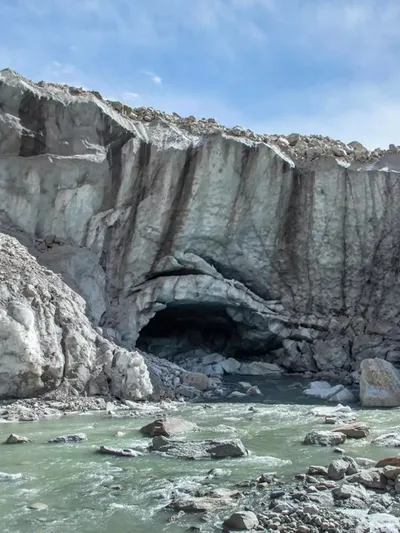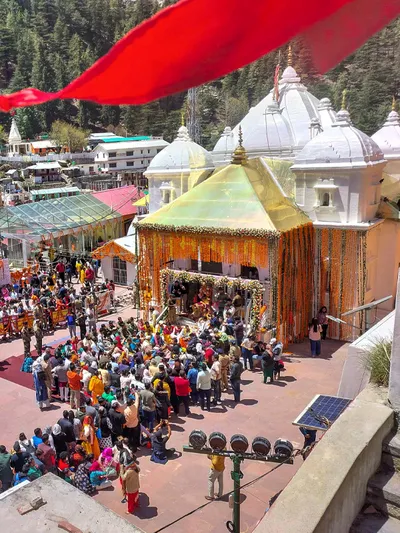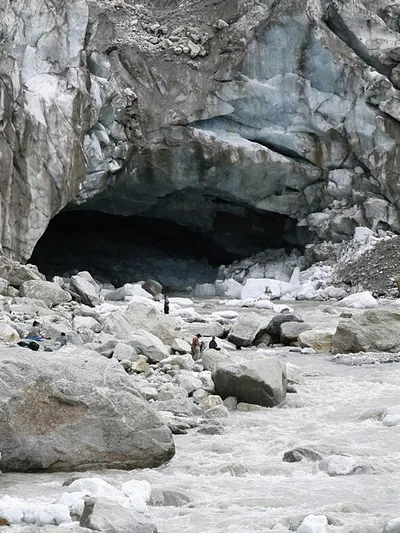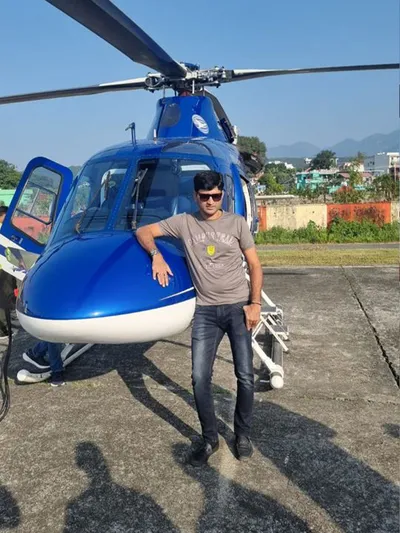
Lesser Known Facts about Gangotri Dham

It is a popular fact that Gangotri Dham has an incredibly colourful and vibrant history that dates back to ancient times. Needless to say, there will be numerous mythological as well as ahistorical stories around it. This seat of goddess Ganga is replete with a number of interesting and lesser-known facts, which only adds to its mesmerizing aura. There’s obviously more to the Dham than meets the eye. So let’s uncover those elusive Gangotri facts, shall we?
Here are a few lesser-known facts of Gangotri Dham that will inspire you to pack up and make your way to the Dham:
1. Story of Bhagirath Shila
The Shila is located right behind the temple and right next to the fast-flowing Alaknanda River. This is a rock structure and it is named after the great king Bhagirath. People also come here to perform Pind Daan for their ancestor which is considered to be an extremely sacred ritual.
This is the place where the king is said to have meditated deeply in order to appease the goddess Ganga. He wanted her to descend down to earth from heaven and provide salvation to the ashes of his ancestors who were cursed by sage Kapil. He finally succeeded and she came down to this world and has been cleansing since then.
2. Temple Structure
The temple of Gangotri was first constructed by the great Nepalese General, Amar Singh Thapa, 250 years ago. He did so with the help of various locals here because he wished to mark the point of emergence of the holy river Ganga. Before this construction was initiated by Thapa, there was no dedicated shrine for Goddess Ganga here.
However, due to some unexpected destruction caused by avalanches, the temple was later renovated and recreated during the 19th century by the royal house of Jaipur. The shrine was created by utilizing a typical north Indian traditional architectural style.
3. Story of Pandav Gufa
Situated in extremely close proximity to the main temple of Gangotri as well as Suraj Kund, this place is a small dark cave, which is said to have been the stopover point for the Pandav brothers and their wife Draupadi, on their way to Kailash Parvat.
It is said that even Baba Ramdev has spent some time here during his early years. From outside, the Gufa looks very small, but from the inside, the Gufa offers a large space which makes the story about the Pandavas spending time here plausible. Currently residing here is a baba who has decorated the interiors with photos of gods and goddesses. Even after all these years, the mythological significance of this place remains untouched.
4. Hues of Royal Pink
Although the temple may seem to be stunningly white but if you take a closer look or do some research on the colour of the temple, you will be amazed to find that the temple holds some amount of light pink colour. The light pink shade essentially adds some mystifying charm to the temple.
5. Akhand Jyoti
Just like all the other Chardham sites, the temple Kapat shuts down for Darshan to the general pilgrims for 6 months. However, the insides of the temple remain illuminated as before closing the temple, the priests light up an Akhand Jyoti which keeps on burning for the entire time it is closed off. The oil used is locally sourced, made by small local girls (which is also a tradition).
6. Not the Original Source of the Ganga!
Although the whole shrine is constructed to celebrate the River Ganga, it’s not the actual source of the holy river. About 18 km from here lies the Gaumukh, which is the real source.
7. Bhagirathi Becomes Ganga Only at Devprayag
The river flowing past Gangotri is not the Ganga! It’s actually Bhagirathi. The river is not called Ganga until it merges with the Alaknanda River at Devprayag.
Symbolically, this represents the fusion of penance (which represents Bhagirathi) with divine grace (embodied by Alaknanda). Often, pilgrims visit both places for a wholesome spiritual experience.
8. Cooking with Salt Was Once Prohibited at Gangotri
To show austerity and purity, devotees in ancient times did not use salt in their food. It was believed that salt could distract one and therefore reduce the sacredness of meditation and prayer. Even today, people who live in Dharamshalas or ashrams near the temple still follow this practice.
9. Ganga Aarti in Gangotri Is Minimalist
You might have seen the grand show of Ganga Aarti at Haridwar or Rishikesh, where it’s performed with great zeal and vigour. You would see big lamps with bells going on, while continuous chanting of the mantras is carried out.
In stark contrast, Gangotri Aarti is performed in a quite peaceful manner. In fact, it’s so serene and tranquil in nature that it’s conducive for a meditative environment – letting devotees connect with the river at a much deeper and spiritual level.
10. Jalamagna Shivling
A Jalamagna Shivling always stays submerged in the Bhagirathi River. It becomes visible only during the wintertime as water recedes, and for the rest of the year, it stays hidden.
As per the mythological account, it represents the exact spot where Lord Shiva received the gushing flow of the Ganga in his matted locks when she was descending to this world. Owing to this huge spiritual significance, it is one of the most important places in Gangotri!
Hope these Gangotri facts made you at least a little more curious about the sacred Dham. Visit the Dham yourself and discover some more facts of your own! Sounds fun, right?












